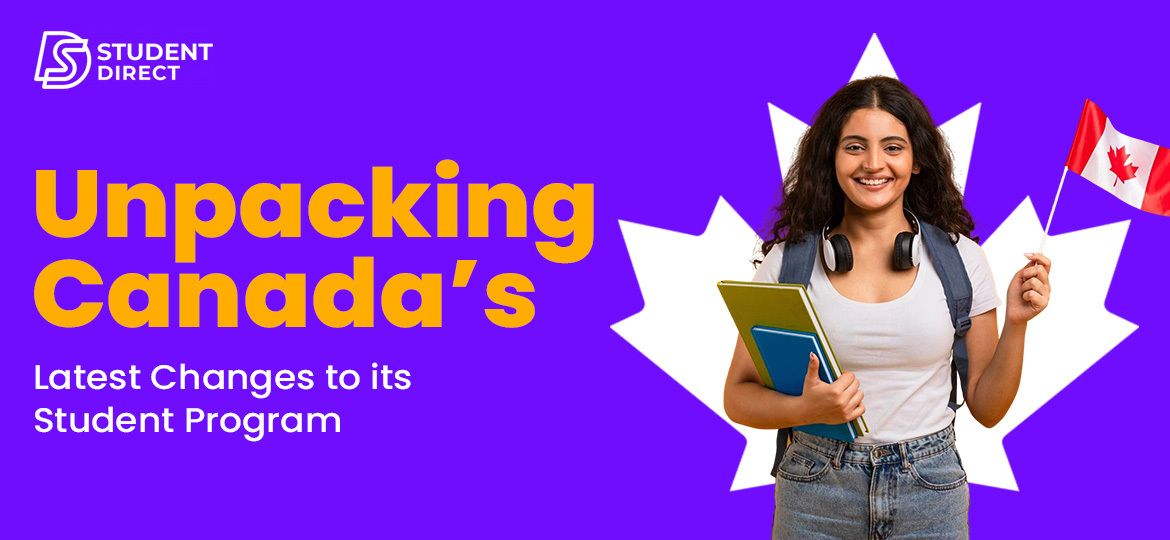
Canada student visa changes 2025 have officially been announced. They mark a significant shift in how international students will plan their educational journey in the country. From updated PGWP rules to tighter study permit caps, the latest policy update is stirring both relief and confusion among students and institutions alike.
The much-awaited changes in Canada’s student programs are out. Some are breathing a sigh of relief that the PGWP duration has not been reduced. However, most people I know, including me, are just confused. There has been a 10% further reduction in Study Permit Caps (and hence the PAL caps). Approximately 12% of these caps are now reserved specifically for master’s and doctoral students. This signals a 20-25% further tightening in the availability of permits.
Despite this, given that most institutions weren’t even meeting their 2024 PAL allocations—underperforming by an estimated 30-50%—I suspect this additional reduction might not have a significant impact. These caps are set to stabilize into 2026. And with the prevailing tempering in demand, it’s unlikely these numbers will be reached.
PGWP Rules Canada: Language Requirements Raise Questions
Another perplexing policy is the new English language testing requirement for the PGWP. Prospective applicants must now demonstrate a minimum language proficiency—CLB level 7 for universities and CLB level 5 for colleges. Interestingly, these requirements are generally lower than the entry standards for most institutions. This raises questions about how such a measure tackles fraud, an issue the government aimed to address.
There was some opportunity here to require students to provide a score higher than the entry requirements they had coming into Canada to apply for PGWP. However, seeing all the other complications being added to the process, I think such a change would have impacted the demand even further.
Canada Student Visa Changes: New PGWP Eligibility
In terms of post-graduate work permit rules, colleges have been dealt a blow—at least perception-wise. The college system has long been fighting to convey to international audiences that it is not a step below the university system. In fact, it’s another integral pillar of the Canadian education system, different but as important as universities. Under the new PGWP requirements, there are no restrictions for university students. But, only graduates from college programs linked to fields of study in long-term shortage occupations will qualify for a PGWP. Several questions remain unanswered:
- How are these programs determined? The labor market varies from province to province and even from city to city.
- What happens to current students who are already enrolled in other programs?
- How quickly will clarifications be provided? Delays could significantly impact the college intake for winter 2025.
I estimate that determining these programs will be left to the provinces. Provinces like Ontario had already made some changes around some 1-year business programs not being eligible earlier this year.
International Students in Canada: The Shifting Demand and Opportunity
Despite these challenges, there is an inherent opportunity for colleges to sharpen their focus on training students in fields with immediate industry needs. This could ultimately strengthen the college brand. It helps to reassure international students that their educational paths are directly aligned with viable work opportunities in Canada.
On the university front, while explosive growth isn’t anticipated in most institutions due to capacity and higher academic and financial requirements, significant opportunities still exist for these institutions to expand their international student body. This can lead to growth in undergraduate degree programs and master’s programs.
Canada’s Student Visa Changes And Trends in Student Program Preferences
In my role at Student Direct, where we support institutions with their direct/independent applicants, we’ve observed a notable shift from business programs towards health, allied health, and trade/technology programs. Student preferences adapt swiftly; what they crave most is clarity, which currently seems in short supply in Canada’s post-secondary sector. As we navigate these changes, providing clear, timely information will be key to maintaining Canada as a top destination for international education.
Long-Term Outlook: Skilled Trades, Immigration & Growth
As I’ve emphasized, the value of international education in Canada remains compelling despite the complexities. I watched the whole conference by the ministers on 18th September, including the Q&A. Two things stood out for me. First, the Minister of Employment said that about 400,000 people in skilled trades will retire by 2032. Additionally, another 300,000 positions will be added, for a total of 700,000 skilled trades positions. That’s a HUGE opportunity for our institutions and students (both domestic and international). Second, Minister Miller emphasizing that immigration at these levels is absolutely necessary to maintain the balance of the economy at least for the next two decades. Regardless of whether we have a sudden birth rate spike in the country.
The intricate details of new requirements and changes to policies brought by the Canada student visa changes 2025 are best articulated by those with deep institutional knowledge—our institutions themselves. It is imperative that institutions take a proactive role in communicating the value of a Canadian education, ensuring they hold the reins rather than relying on intermediaries to shape the narrative.

